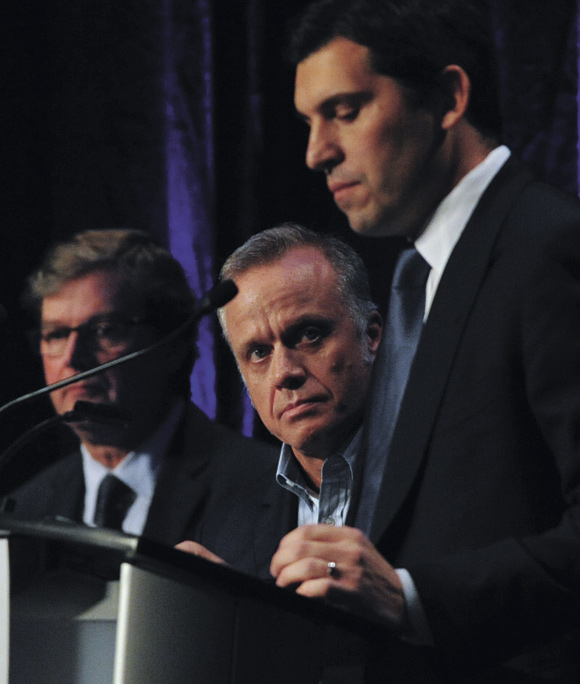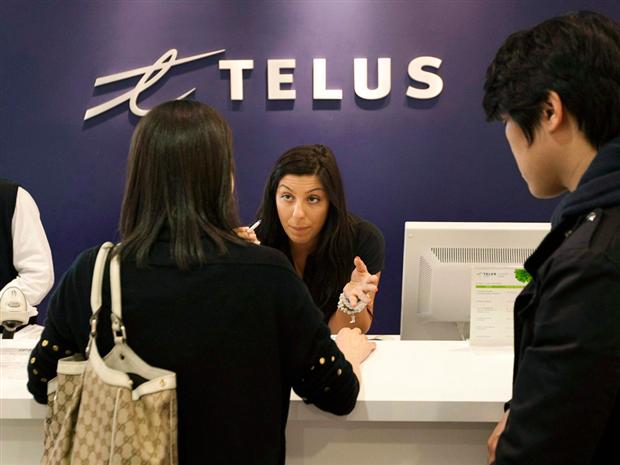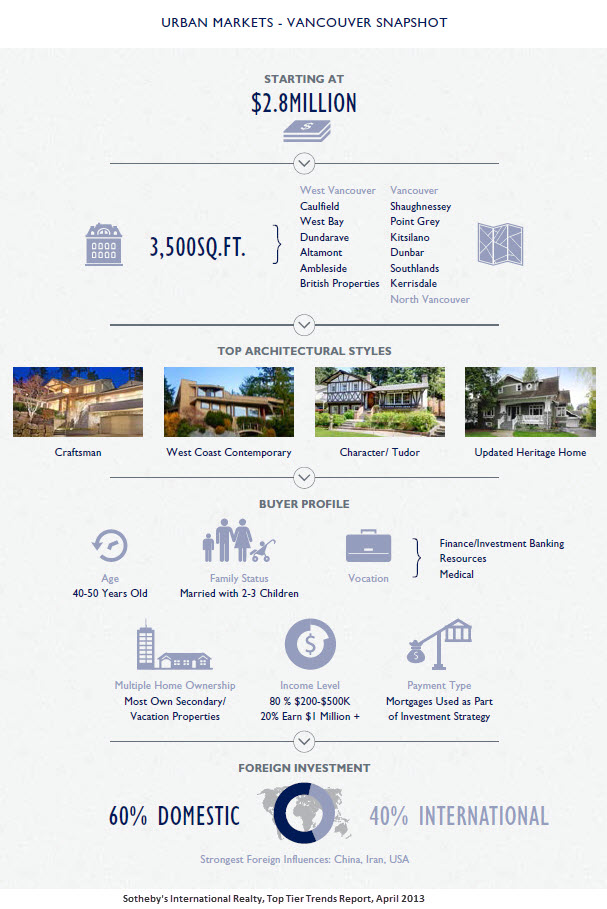Other
Archive for May, 2013
Teja Vista 9010 School St., Chilliwack, 4-level, 26 condo building by ICE Development
Thursday, May 23rd, 2013Posted in Real Estate Related | Comments Off on Teja Vista 9010 School St., Chilliwack, 4-level, 26 condo building by ICE Development
Tsawwassen Springs 5099 Springs Bouldevard, 6-level condo building 490 homes by Crosby
Thursday, May 23rd, 2013Other
Posted in Real Estate Related | Comments Off on Tsawwassen Springs 5099 Springs Bouldevard, 6-level condo building 490 homes by Crosby
Think that Former Grow-Op is a Deal? Think Again.
Thursday, May 23rd, 2013Scott Dawson
Other

Whenever I get a call from a REALTOR or client asking me about obtaining mortgage financing for a former grow-op the first thought that comes to my head is, “Why would anyone want to buy a former grow-op?“. This blog post was written not only to explain the process of obtaining a mortgage for a former grow-op, but also to present some opinions on why you shouldn’t.
How will I know the property I’m buying is a former grow-op?
In British Columbia, the property disclosure and/or MLS listing will indicate the property has been a former grow-op. Not all provinces in Canada require a property disclosure. Use a REALTOR who can research the property and help find out if it was a former grow-op.
Where can I get a mortgage for a former grow-op?
The truth is, not very many places. This is part of the reason I always encourage clients to avoid buying a former grow-op.
Over the past few years the majority of lenders in Canada no longer finance former grow-ops. There’s a good chance that if you walk into your local bank branch they’ll turn you away. There is only a handful of lenders left that will even consider lending on a former grow-op and for the most part are made up of local Credit Unions.
Since there are fewer mortgage financing options for a former grow-op, be prepared to potentially pay higher rates at origination and renewal. Make sure you thoroughly review the terms & conditions of the mortgage and make sure they fit with your current and long-term goals for the property.
While you might be getting a “deal” on the purchase price of a former grow-op, you may find it ends up costing you more in the long run since you are pigeon-holed into one lender.
When will a lender loan on a former grow-op?
Lenders will only provide financing to a former grow-op if it has been fully remediated. In British Columbia whenever a property disclosure and/or MLS listing indicates that a home has been declared a grow-op, lenders will require a satisfactory Phase 1 Environmental Assessment and a re-issued occupancy permit by the applicable municipality.
If you are thinking of purchasing a former grow-op, the listing REALTOR should have both on hand. Ask to see them. Without both a satisfactory Phase 1 Environmental Assessment and occupancy permit in place you will not get a mortgage.
How does buying a former grow-op affect value?
In this video Calgary REALTOR Kelley Skar explains how purchasing a former grow-op will affect value of your home should you decide to sell. Since former grow-ops were once a hazard to the surrounding area they can contribute to a decline of the market value of the property.
Since a former grow-op is stigmatized, you will find less buyers interested in the property in the first place. Something else to consider is that it will be more difficult to find a buyer for your property since many people want to port their mortgage when they are purchasing a new home. There’s a good chance that these potential buyers can’t port their mortgage to a grow-op since their lender won’t finance them.
Should I have other concerns when buying a former grow-op?
Absolutely! Since the property was once used for criminal activity you need to aware that your property may still be viewed as such by other criminals, and you may be more susceptible to home invasions and break & enters.
Still want to buy a former grow-op?
Hopefully you will give it a second thought after reading this blog post, but if you are still wanting to buy a former grow-op, get in touch with me and we can discuss further. I can make sure you are pre-approved at a lender that finances former grow-ops and get you in touch with a REALTOR that has experience with these types of properties.
Update: February 12th, 2013
After publishing this post I was contacted by Patrick Johnstone, an Environmental Geoscientist experienced in managing contaminated sites issues in British Columbia. Patrick is also a New Westminster resident and you can find him on Twitter (@NWimby) and his blog over at NWIMBY (New Westminster In My Back Yard).
His comment offers a far more technical insight into buying a former grow-op so I have posted it below.
The production of illicit drugs (grow-up, meth lab, etc.) is considered a “Schedule 2 Activity” under the BC Contaminated Sites Regulation (“BC-CSR”). This means that any property where these activities took place are subject to a bunch of screening measures that would normally only be applied on commercial or industrial properties where activities “likely to cause contamination” took place. So the house is now in a classification with gas stations, machine shops, coal mines, etc. Illegal grow ops and meth labs are one of the very few “Schedule 2 Activities” that commonly take place on residential-zoned property, and therefore the only time most residential landowners would encounter the BC-CSR.
From a Provincial legislation side, if you go to the City to request a Demolition Permit (or a Rezoning, Subdivision or Development permit) for a property where there has been Schedule 2 Activity, the City is required to get a Site Profile from you outlining the site history, and send that to the Ministry of Environment prior to issuing a permit. The Site Profile must be filled out by someone knowledgeable of the site history, and if the presence of a illicit drug operation was disclosed to you on the Property Disclosure form, you must relay this information forward (or risk defrauding the government – a bad idea). At the very least, this is a 2-week inconvenience while the Ministry decides your property is no risk and releases the Permit. At the worst, the Ministry may “freeze” the permit, preventing the City from issuing any approvals until the property is cleaned up to the Ministry’s satisfaction.
The Phase 1 Environmental Site Assessment will not likely provide this assurance to the Ministry. The actual report required is a “Stage 1 Preliminary Site Assessment” – which is a slightly expanded Phase 1 ESA that has all the bells and whistles required by the Provincial Regulation.
For an urban grow-op scenario, this report will cost anywhere between $1,500 and $3,000 depending on the Environmental Professional you hire and their thoroughness. Even this report is just a table-top survey of the property history with a site visit to assess conditions; it will not test for the presence of contamination.
If that report comes back saying there is no reason to suspect any environmental issues, the homeowner may send that to the Ministry, and they “may” release your permits. If, however, this report suggests that there is evidence or a high probability that polluting substances were spilled in the soil, or a septic field exists where chemicals may have been dumped, or there is any other reason to suspect contamination (e.g., stressed vegetation, oil stains on a gravel patch, etc.), the Ministry would request a “Stage 2 PSI.” This stage involves drilling a couple of small holes in the yard, putting some soil in a bag and groundwater in jars to send off to the lab for analysis. Even if no contamination is found, you are lucky only paying $15,000 or more in investigation costs. If contamination is found (those gangsta guys poured their leftover glycol out the back door instead of depositing it in a regulated landfill!) you will be headed down a real rabbit hole. It can take tens or hundreds of thousands of dollars, and more than a year, to complete investigations and perform the cleanup required to get permission from the Ministry to redevelop your land.
The only way to be sure your former-drug-house property is not going to cause you contamination issues down the road is not to have an “Phase 1 ESA” in hand, but a “Determination” letter from the Ministry stating that the site is not contaminated, or a “Certificate of Compliance” from the Ministry stating that the site has been cleaned up to the Ministry’s satisfaction, and no longer is considered contaminated. It is important to note that both of these Ministry documents arrive with a series of “Schedule B Conditions” which must be adhered to for the Determination/Certificate to be valid, and may reduce your enjoyment of your land.
This is just a little peek into the window of the BC Contaminated Sites Regulation. I would not suggest anyone get involved in purchasing a piece of Contaminated Land until they fully understand the CSR, or (much better) get the advice of a Qualified Environmental Professional to advise if/how they will need to interact with the Ministry in order to get their potentially-contaminated land cleaned up, or cleared of the legislative stigma of a “Contaminated Site.”
© 2013 Real Estate Weekly
Posted in Real Estate Related | Comments Off on Think that Former Grow-Op is a Deal? Think Again.
Three industry professionals gaze into their crystal balls to consider what’s ahead this year for real estate in the Lower Mainland
Thursday, May 23rd, 2013Reading The Signs
STEVEN THRENDYLE
Other


FROM LEFT: TONY ASTLES, EXECUTIVE VICE-PRESIDENT OF BENTALL KENNEDY, ERIC CARLSON, OF ANTHEM PROPERTIES, and COLIN BOSA, CEO OF BOSA PROPERTIES TOOK PART IN A PANEL DISCUSSION DURING URBAN DEVELOPMENT INSTITUTE’S ANNUAL MARKET FORECAST.
In mid-January of each year, more than 1,000 real estate professionals, from developers to sales managers to politicians of all stripes, gather in Vancouver for the first meeting of the Urban Development Institute (Pacific Region).
And the topic is always the same: “What’s the annual forecast for the residential and commercial real estate market?”
For 2013, Diana McMeekin, president of Artemis Marketing, moderated a panel discussion between Tony Astles, executive vice-president of Bentall Kennedy, Eric Carlson, president and CEO of Anthem Properties, and Colin Bosa, CEO of Bosa Properties.
2012 was a year in which there were a lot of contradictory trends. The number of home sales – especially re-sales in high priced neighbourhoods such as the West Side and West Vancouver – seemed to tumble each month, news that was transmitted via doom-peddling blogs and, as one participant at the meeting said, “the Toronto media.”
Prices themselves, however, remained fairly steady. As Colin Bosa said, “Clearly, making an average of 11 per cent per year from 2003 to 2011 is not sustainable.” However, confidence in the future amongst developers seems strong, new housing starts expanded to just over 19,000 from 17,000 – one of the most active years in the past two decades.
Commercial real estate specialist Tony Astles cautioned against “the bad blitz of world economic news that has badly battered investor confidence while governments continue to kick their problems down the road.”
His forecast for 2013 was that “the Vancouver market has continued to make progress during strange times. We have some of the best risk-adjusted properties in the world. Real estate around the Lower Mainland represents a very local economy.” Much of the current demand in the Lower Mainland is near transit lines outside of the city limits. In fact, to Astles, one of the major challenges is a labour force in which experienced workers are retiring and being replaced by younger workers. Overall, however, Astles is bullish on the market.
For Eric Carlson, of Anthem properties, “The years from 2009 to 2012 were very good for B.C., but not so good for the world – with Middle East and African turmoil and the European debt crisis and the 24-hour news cycle reporting on it every minute of the day.”
B.C., which relies on in-migration from other parts of Canada as well as investment from China and the United States, has been “pretty smug about the situation up here.” He said multi-family rentals will continue to be a low-risk investment, particularly because of limited supply.
“I think in 2013 you’ll see a lot of the fear go away. The United States’ recovery will absorb all of the homes left over from the sub-prime crisis and builders will start bringing on new product. That will help the B.C. economy due to demand for forest products since there are three jobs created down there for every home that is built. The demand for B.C. lumber will go up, which will create more high paying jobs up here.”
Speaking specifically about the residential condo market, Colin Bosa, of Bosa Properties, still sees a lot of life left in B.C.’s long term housing markets, even though he’s prepared to admit that there has been overbuilding in certain neighbourhoods, such as Southeast False Creek (near the Olympic Village) and in Coquitlam centre, which is still a few years away from being connected to Vancouver by the Evergreen transit line. “The mainland Chinese are still very interested in property around Metrotown, where currently there is no inventory for sale.”
“If interest rates remain low, net migration returns to the 40,000 mark, and housing starts continue at around the long-term average of 15,000 per year, then the market will be balanced.” Developers will have to concentrate on efficient floor plans, locations close to transit, and bring well priced products to market.
“The good news for all the salespeople in the room is, you’re going to sell lots of real estate this year, but the bad news is you’re going to have to work at it.”
The take-away message is that the housing bubble Vancouver might have experienced a couple of years ago will not pop in 2013, although interest rates cannot increase and immigration from foreign countries – notably from China – will have to stay strong. Annually, British Columbia draws up to 50,000 newcomers internationally and from other parts of Canada and while these three speakers foresee long term prosperity, the average Lower Mainland homeowner can’t expect to see the huge jumps that occurred between 2009 and 2011 happening any time soon.
Posted in Real Estate Related | Comments Off on Three industry professionals gaze into their crystal balls to consider what’s ahead this year for real estate in the Lower Mainland
A Greenwich House Aims to Sell for $190 Million
Wednesday, May 22nd, 2013An eye-popping price tag in Connecticut is a new test of the ultra-high-end property market
ALYSSA ABKOWITZ
Other

Named Copper Beech Farm, the Greenwich, Conn., estate sits on 50½ acres and includes a 12-bedroom Victorian, French-renaissance mansion, 4,000 feet of water frontage on Long Island Sound and two offshore islands. Natalie Keyssar for The Wall Street Journal

The most expensive home ever listed in America is up for sale at US$190 million – and it still needs some updating.
The 50.5-acre Copper Beech Farm estate at Greenwich, Connecticut, contains a 12-bed Victorian mansion and 4,000 feet of waterfront on Long Island Sound, as well as two offshore islands.
The exclusive property has 15,000 square feet of living space, 7,000 square feet of basement and attic space, and an 1,800-foot-long driveway, reports The Wall Street Journal website.
The property dates back to the 1890s and is owned by timber magnate John Rudey, according to records, who has lived there for more than 30 years and is selling as his children have grown up.
“While in good condition, the interior needs upgrading; Mr Rudey, for example, had plans drawn up to design a kitchen off the dining room, as the main kitchen is in the basement, which was part of the staff quarters. There are old speaking tubes from pre-electricity days and sleeping porches, which were once used in warmer months before air conditioning was the norm,” says the Wall Street Journal.
Most of the value is in the land, which contains a grass tennis court, gardens, a carriage house, apple orchard, two greenhouses, and a 75-foot-long heated pool with hot tub, says listing agent David Ogilvy from the Christie’s affiliate David Ogilvy & Associates.
The current most expensive home is a Montana Ranch which is believed to have been bought for $132.5million by property mogul Stanley Kroenke in November 2012.
Posted in Real Estate Related | Comments Off on A Greenwich House Aims to Sell for $190 Million
Look out REALTOR, Rogers Communications wants a piece of your cut
Wednesday, May 22nd, 2013Garry Marr
Other

Zoocasa will act as a brokerage hooking up consumers with agents from existing firms, and getting a fee for itself in the process. Darren Calabrese/The Canadian Press
Rogers Communications Inc. subsidiary Zoocasa plans a further incursion into the territory of organized real estate.
Zoocasa said it will roll out a new platform that will allow consumers to sign up with agents through its website and ultimately get a rebate on their commission.
Zoocasa has tapped lawyer Lawrence Dale – a founder of Realtysellers whose complaint to the Competition Bureau led to an investigation of organized real estate – to head up its real estate business.
The Bureau ultimately opened up the multiple listing service, the backbone of the industry’s control over home sales, and allowed realtors to offer more a la carte services and the loosening of the industry’s grip on data.
Now Zoocasa, under Mr. Dale, will offer consumers a rebate on any sale which is expected to be worth more than $2,000 on a a typical $550,000 transaction.
“We have a built a network of top quality, experienced productive agents,” said Mr. Dale, adding deals are in places with agents from major brands like Century 21, Re/Max and Royal LePage.
Zoocasa will act as brokerage hooking up consumers with agents from existing firms, getting a fee for itself in the process. A percentage of the commission, or a referral fee, comes from the agent.
“We were inundated with quality agents who wanted to be part of this,” said Mr. Dale.
The new new selling platform is being launched in the greater Toronto area first with plans to expand it across the country.
© 2013 National Post
Posted in Real Estate Related | Comments Off on Look out REALTOR, Rogers Communications wants a piece of your cut
Foreign Investment in Vancouver Real Estate
Tuesday, May 21st, 2013Elizabeth Wilson
Other


When it comes to foreign ownership of Vancouver real estate, we operate in a data vacuum. No agency collects information on where home buyers come from. It’s not that this is an impossible task: Australia, Alberta, Switzerland, and many other places routinely keep track of foreign buyers. We don’t.
We know investors and speculators are buying here. We see their influence in desirable neighbourhoods where prices have spiralled up steadily, or in downtown condos with most of their windows dark at night because no one’s home. We see the influence of investment buyers when they suddenly disappear, leaving their former haunts with escalated prices and few buyers.
A couple of recent studies have tried to identify segments of the foreign investor market. And while they’re not wholly successful, at least they give us data – something sorely missing from the uproar about foreign ownership and investment in Greater Vancouver housing.
Luxury House Buyers
A new report from Sotheby’s International Realty found that foreign buyers make up 40% of the luxury single-family home market in Greater Vancouver. Most come from China, but “There has also been a recent surge in buyers from Iran and the United States.”
The Top Tier Trends Report surveyed the top agents in Sotheby’s Canadian network to find out who’s buying luxury houses in Vancouver, Toronto and Montreal. It also asked about those buyers’ preferences.
It defined a luxury home in Vancouver as having at least 3,500 sq.ft. and an entry-level price point averaging $2.8 million (compared to $2 million in Toronto and Calgary, and $3.5 million in Montreal). However, the minimum price point for a luxury house in Vancouver varies widely depending on the neighbourhood. The West Side fetches a $4 million minimum price. The bottom of West Vancouver’s high-end is a relative bargain at $2.5 million. And at $2 million, an entry-level luxury house in North Vancouver is cheap like borscht, if you have that kind of money.
Andy Yan’s Non-Resident Occupancy Study
The Sotheby’s survey didn’t cover condos or non-luxury homes. But Andy Yan, Senior Urban Planner with Bing Thom Architects, took on the task of identifying investor-owned properties of all kinds in 2008 and has been honing his measurements ever since.
He uses a range of methods to try to peg foreign investor-owned properties in the City of Vancouver including:
- BC Assessment notices sent outside Metro Vancouver
- BC Hydro bills that show under 150 kwh of power usage
- Strata minutes revealing the number of renters or empty units…
… And most recently, the 2011 census numbers for unoccupied dwellings and those “occupied solely by foreign residents and/or by temporarily present persons.”
After a great deal of number crunching Yan says, “It isn’t as easy to measure foreign investment in Vancouver real estate as to talk about foreign investment in Vancouver real estate.”
In a later blog post he adds, ” … we strongly believe that many Downtown condos are investor owned/non-owner occupied. However, there is no simple and direct method of determining whether this investment is held by a Canadian or not. The nationalities/citizenship status of these investors is not readily known through these data sets.”
Yan presented his findings during a recent SFU Woodward’s panel discussion called “Foreign Investment in Vancouver Real Estate.” The big takeaways from that discussion were that a) we need to talk about investment as a whole, not just foreign investment, and b) we can’t talk about it intelligently if we don’t have hard numbers, so we need to start tracking properties that are bought for investment purposes, and where those investors come from.
In the slide that got the most attention, Yan restricted himself to simply identifying non-resident occupancy, i.e., people (local or not) who own condos but either rent them out, live in them part time or leave them empty. He created this map showing the concentrations of non-resident occupancy in the City of Vancouver.
While the City of Vancouver as a whole had 7.7 per cent non-resident occupancy, parts of Downtown had up to 23.7 per cent – almost one in four.
Both the Sotheby’s survey and Andy Yan’s research show that location matters. Investors tend to cluster in neighbourhoods that suit their needs. And by flooding into a neighbourhood, they change it. This is a major reason Yan recommends finding reliable methods to measure homes bought for investment.
As he said in his presentation, “Is the issue really more about investment in Vancouver real estate and the kind of behaviours that occur with that investment?”
He’s talking about the mentality where owners see their property as simply an investment vehicle, and they’re not involved in the life of the community.
He concludes, “… I think we live in a remarkable urban, global age. And while I’m not sure about foreign investment in Vancouver real estate, I really do believe that like many other cities around the world, money floats. And money in the world is coming to Vancouver just as much as it’s coming to San Francisco or Singapore….” and where it ultimately parks in a city, fundamentally presents challenges if we are to aspire to a sustainable, liveable and just city.
“And where it’s parking in a city perhaps means that we are posed a challenge towards rethinking some of those parking rules.”
The two studies are a good start on opening up the discussion.
© 2013 Real Estate Weekly
Posted in Real Estate Related | Comments Off on Foreign Investment in Vancouver Real Estate
Up to date info for various Fintrac requirements
Tuesday, May 21st, 2013INDIVIDUAL CLIENT IDENTIFICATION
Other
Q: What should a brokerage do if a client absolutely refuses to provide the information required to complete either the Identification Information Record or the Receipt of Funds form?
A: The strict legal position is that a failure to identify a client, for any reason, would place the broker in non-compliance with the FINTRAC rules. However, FINTRAC has stated that whether penalties are invoked for such a failure depends upon a complete analysis of a broker’s compliance history as well as their office compliance systems. It is entirely at a member’s discretion whether or not to proceed with such transactions and, if a member does proceed, FINTRAC advises that the member should submit a Suspicious Attempted Transaction Report.
Q: Should our Board take a listing where the personal information required for FINTRAC compliance has not been given?
INDIVIDUAL CLIENT IDENTIFICATION
Q: What should a brokerage do if a client absolutely refuses to provide the information required to complete either the Identification Information Record or the Receipt of Funds form?
A: The strict legal position is that a failure to identify a client, for any reason, would place the broker in non-compliance with the FINTRAC rules. However, FINTRAC has stated that whether penalties are invoked for such a failure depends upon a complete analysis of a broker’s compliance history as well as their office compliance systems. It is entirely at a member’s discretion whether or not to proceed with such transactions and, if a member does proceed, FINTRAC advises that the member should submit a Suspicious Attempted Transaction Report.
Q: Should our Board take a listing where the personal information required for FINTRAC compliance has not been given?
A: The issue of collecting personal identification information for a Record is an obligation of the broker or agent, who are required by law to comply. There is no role for the Board in ensuring that Records are properly completed.
Q: If a client refuses to disclose his personal information for the Individual Information Record, can I simply get the client to stroke off that part of the form and initial it?
A: No – you would be in contravention of the law. All relevant information required by the Records must be provided.
Q: If a husband and wife are co-purchasing a property, and both names will be on title, do you need to ID both persons?
A: Yes, the client identification requirement under the Proceeds of Crime (Money Laundering) and Terrorist Financing Act and Regulations specify that you need to identify every person who conducts the transaction. Therefore, in the case of a husband and wife co-purchasing a property, you would need to keep a client information record of both individuals. Whether the information is on separate forms or one form is up to the REALTOR®, to determine which internal process/procedure suits them best.
Q: Do I have to make or keep a photocopy of whatever document my client provides for ID?
A: You do not need a photocopy of the client’s ID for Canadian customers, just the critical information on it. It is recommended that you obtain a copy of the foreign client’s ID when documenting their information.
Q: Buyer & Seller are in Canada, face-to-face, and no mandatary involved. Earlier documents seemed to indicate that, in this situation, photocopies of ID were a requirement. The new commentaries seem to say that photocopy is only recommended. Is this correct? Following from that, Passports & Visas were mentioned as being necessary at one point. It now seems that we do not need anything like that, just the equivalent of what we would take from a Canadian citizen. Again, is this correct and where can I find clarification on this point on the site?
A: You are correct in saying that photocopies of identification documents are not necessary when verifying your client’s identity face-to-face. REALTORS® are simply required to record the requisite information in the client Identification Information Record. However, CREA does recommend that a copy of the client’s identification be retained if you are dealing with a foreign client.
A government issued piece of ID with a unique identifier number can be used to verify the identity of an individual client, including a non-Canadian. A passport would be a sufficient piece of ID; however, there are a number of different pieces of identification will also meet this requirement. If the identification document is from a foreign jurisdiction, it must be the equivalent to an acceptable Canadian document.
Posted in Real Estate Related | Comments Off on Up to date info for various Fintrac requirements
Immigration Reform Could Generate $500 Billion in New Real Estate Transactions
Monday, May 20th, 2013Other

If current legislation that creates a path to legalization for 11 million undocumented immigrants is passed, the nation’s Hispanic real estate leaders estimate that it would create a new pool of 3 million homeowners and pump more than $500 billion in sales, income and spending into the U.S. housing economy. According to an info graphic released by the National Association of Hispanic Real Estate Professionals (NAHREP), the chain reaction triggered by home purchases would drive demand for more than $500 billion in real estate transactions and an additional $233 billion in origination fees, real estate commissions and consumer spending associated with homeownership.
Based on previous estimates from analysts, NAHREP officials calculate that as many as 6 million undocumented immigrants are likely to pursue legalization and possibly citizenship under the bill and up to 3 million would pursue homeownership based on the patterns of naturalized Latinos.
“Foreign-born householders have a high value and strong desire for homeownership,” says Juan Martinez, NAHREP president. “They have been here in our midst for years, working and participating in our economy. Legitimizing them through immigration reforms would finally give them the access and the confidence to buy homes.”
NAHREP, a nonprofit 501(c)6 trade association with 20,000 members, based its projections on updated data and the approach it used for its 2004 study “The Potential for Homeownership Among Undocumented Workers,” to estimate the economic impact on the current housing economy.
– Assuming past purchase trends among foreign-born householders remain consistent, half or up to 3 million of the 6 million undocumented immigrants that are expected to pursue legalization, will also buy a home once they have legal status;
– Many of the undocumented foreign-born householders have age and income characteristics associated with potential homeownership with household incomes of about $40,000;
– Up to 3 million undocumented foreign-born householders could potentially afford a home worth $173,600, the national median sales price of a home. This would generate more than $500 billion in new mortgages, and about $25 billion in mortgage origination and refinance income;
– Assuming an average of 5.5 percent in sales commissions for these home sales, these purchases would create $28 billion in income within the real estate community;
– Home purchases by 3 million legitimized immigrants would create $180 billion in additional consumer spending within local communities based on the average $60,000 in associated purchases estimated by the National Association of REALTORS® in 2012.
“If we can get past the anti-immigrant sentiment that has so strongly colored the national conversation around immigration reform, we will see just how much our U.S. economy has to gain by legitimizing these people,” adds Martinez.
Other housing and corporate leaders that work closely with the underserved market agree that legalization will spark swift interest in homeownership among these Latinos because they are already established in communities here in the U.S.
“Homeownership is an integral part of the American Dream in the undocumented immigrant community. Our estimates in 2004 were very conservative and we received many calls from consumers who wanted to know what lenders were offering these loans,” says Gary Acosta, NAHREP co-founder and a veteran housing leader who was chairman of NAHREP when the study was conducted. “With the possibility of a legitimate path to residency and citizenship, we expect this group to be eager to buy homes.”
“Immigration reform would unleash pent-up demand for homeownership by millions of undocumented immigrants. It would help re-establish homeownership as a driving force in building wealth and accelerate the recovery of the nation’s economy,” says Alejandro Becerra, a former senior housing fellow, researcher, author and recipient of the 2011 HOPE Award.
In its annual policy statement issued last March, NAHREP leaders advocated for immigration reform at the federal level that would create a path to citizenship for undocumented immigrants and their children and bring them out of the shadows.
Copyright © 2012 RISMedia. All rights reserved.
Posted in Real Estate Related | Comments Off on Immigration Reform Could Generate $500 Billion in New Real Estate Transactions
Greening your home
Thursday, May 16th, 2013Posted in Real Estate Related | Comments Off on Greening your home

